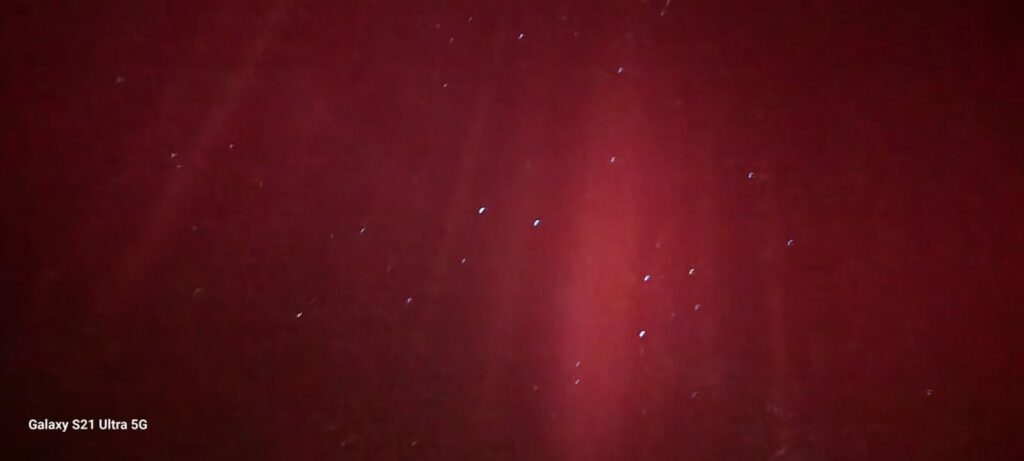
May 11, 2024
A historic solar storm impacted Earth throughout the night on Friday, 10 May 2024 and continued into Saturday, 11 May 2024. The South African National Space Agency (SANSA) Space Weather Centre issued several G4 warnings and, for the first time since 2003, one G5 warning was issued. The Geomagnetic Storm Scale indicates the severity of geomagnetic storms. It is denoted by a G followed by a number from 1 to 5, with 1 being a minor event, and 5 being an extreme event.
A geomagnetic storm occurs when charged particles from the Sun, caused by a coronal mass ejection (CME), interact with the Earth’s magnetic field. The impact of such a storm is mostly on technological systems, however, it is also the origin of the northern and southern lights. There were several reports of Aurora Australis also known as the Southern Lights being visible over the Southern tip of Africa. Reports of Southern light sightings were reported from Gansbaai in the Western Cape and Namibia among others.

Aurora Australis captured by Janine Taylor from Gansbaai.
Auroras are caused by the energetic particles from the Sun as it interact with the gases in the upper atmosphere.
Jon Ward, acting Executive Director at SANSA Space Science in Hermanus noted that this is the largest geomagnetic storm that has been observed in a very long time. “Although the likelihood of such a storm occurring is quite low, the severity of the impacts on technological systems can be very high. The energy and transport sectors are particularly vulnerable at the moment.
“Space weather is a global phenomenon, the impacts are regional and vary greatly, depending on the time of arrival of the storm and whether the region is experiencing day or night.
“SANSA’s Space Weather Centre was purposely built to focus on the impacts in the African region. This storm highlights the importance for businesses using technologies that are susceptible to the adverse effects of space weather to include space weather in their risk planning. The world is so dependent on technology now and everything is so integrated with devices getting smarter and interconnected. We are so much more susceptible to disruptions due to solar events and space weather than we were 20 years ago. Awareness of space weather is critical in planning to protect against potential losses.”
The South African National Space Agency (SANSA) launched its 24/7 operational Space Weather Centre at its facility in Hermanus in November 2022. This state-of-the-art facility operates around the clock to monitor and mitigate the risk of space weather on our continent. SANSA has been actively studying and forecasting space weather since 2009 and is the only accredited space weather centre in Africa.


